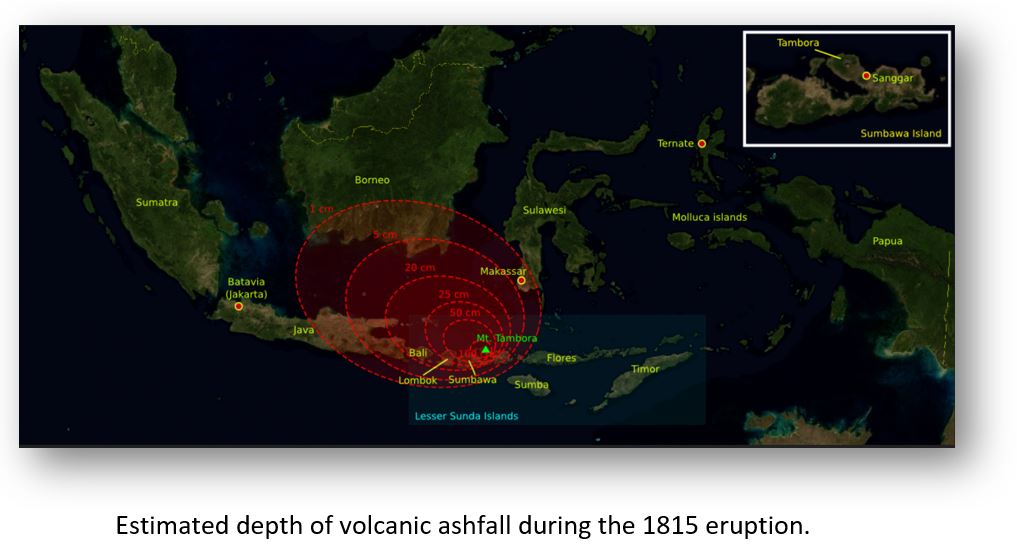1816 was the year without a summer. Frost occurred in northern Pennsylvania every month. Ice formed ½-inch thick in May. Snow fell to depth of 3 inches in June. Ice formed on window glass on July 5. The corn was so frozen that farmers cut it in August and dried it for fodder.
What the folks of northern Pennsylvania didn’t know is that the largest volcanic eruption of the last 10,000 years had occurred on an island in today’s Indonesia in the Pacific Ocean. The explosive eruption of Mount Tambora sent a huge cloud of ash far into the atmosphere. How much? Well, the top 4,000+ feet of the volcano were gone after the eruption. Once the volcanic material got into the atmosphere, it spread around the earth, filtering and blocking the sun for much of the next year, causing a “volcanic winter.” Without full summer sunshine, crops failed everywhere. Humans and livestock starved. It has been estimated that 71,000 people died in the vicinity of the eruption; there is no estimate of the number of other people who died as a result of famine and disease across the globe. This volcano is still active.


